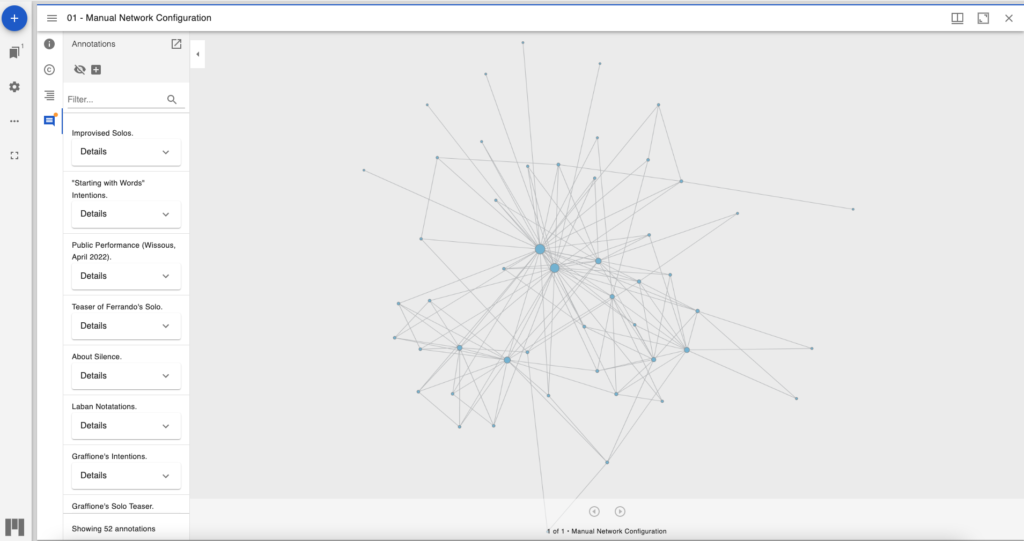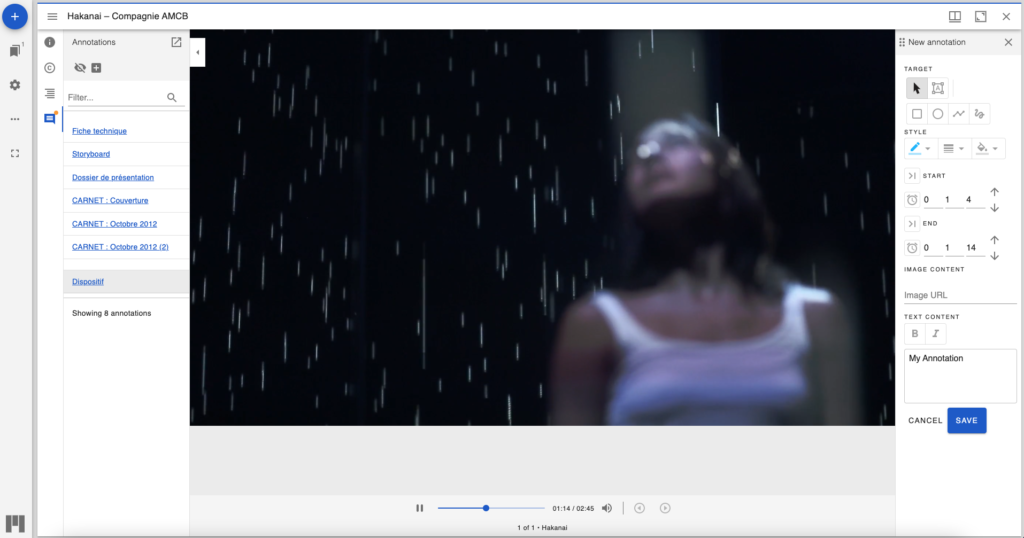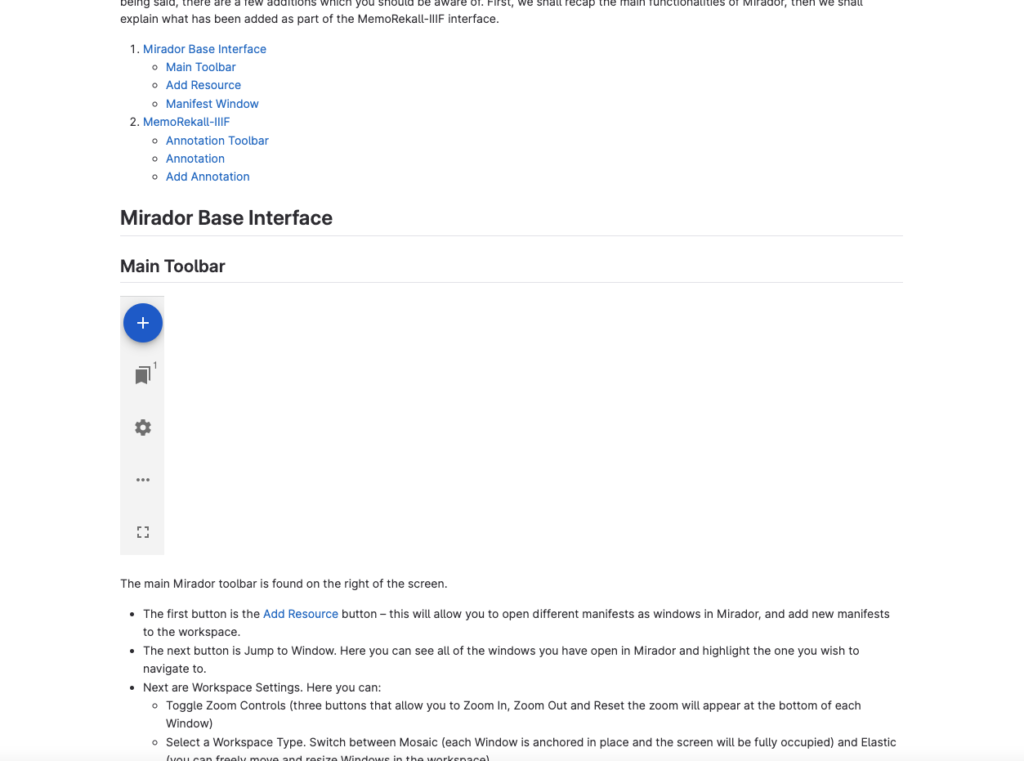Follow the latest developments of MemoRekall.
Browse a semantic analysis around the COESO project.
Experiment in the live sandbox.
MemoRekall is in active development. As mentioned in the roadmap, one of our current technical objectives is to make MemoRekall compatible with the International Image Interoperability Framework (IIIF). To anchor development in a real semantic case study, we have created a number of examples around the documentation of a collaboration between a choreographer and a philosopher in Dancing Philosophy, one of the Pilots of the H2020 COESO Project. From this page, you can browse these examples, or read more about our process in an article written about it. You can also experiment in a live sandbox, have a look at the source code and read the documentation to help you through your exploration.
Semantic Analysis Case Study: the COESO Project
MemoRekall is an integral part of Dancing Philosophy, Pilot 2 of the COESO Project. To begin, MemoRekall was used to document the collaboration between the dancer and the philosopher in the form of annotated video capsules. You can learn more about the project here. In this second iteration we consider that the video is not always the principal document around which one may need to articulate one’s annotations in order to analyze a collaboration. We decided to propose a new development of MemoRekall and take as a basis an IIIF-driven environment. We call this prototype MemoRekall-IIIF and refer to the first version of MemoRekall as MemoRekall ‘legacy’. With this case study, we wish to show how MemoRekall-IIIF allows for the annotation of all types of documents, including video, and also that it can support a semantic analysis. You can read more about this here.
Demo Content

This work produced a IIIF manifest networks. In this live demo, you can browse a collection of IIIF manifests of varying natures. We have included a diverse number of documents from Dancing Philosophy: video recordings of performances and workshops, audio recordings, written documents, Laban Kinetography, photos etc. From a technical point of view, we have built upon the Mirador IIIF viewer interface that allows the user to create annotations for image documents. We have added the possibility to annotate all types of documents, including video. In addition to this, we have also shaped composite and bespoke manifests that offer themselves as powerful tools for semiotic and fluid navigation of multimodal collections.
In manifests 01 Manual Network Configuration and 02 Automatic Network Configuration, you will find network visualizations of a same collection of documents. The first was made manually, the second using a simple algorithm that created links by processing the documents’ metadata. These visualizations are interactive, and you can open each document straight in the Mirador viewer by clicking on it.
In manifests 03-06 we demonstrate an example of a ‘legacy’ MemoRekall capsule that has been transposed into the new environment. It is important for us to ensure retro compatibility with the previous version of MemoRekall, and these manifest networks demonstrate that it can easily be done through simple parsing of the XML file generated by MemoRekall ‘legacy’. We have also explored how these translations can be augmented in the new environment with network visualizations and different types of annotations.
In the manifest 07 Composite Collaboration Analytics Compass another bespoke data-driven visualization of the corpus is derived from our semantic analysis on the collaboration between the dancer and philosopher, based on the work of Dominique Boullier. Each document is positioned on a compass that indicates the typology of their collaborative nature (see the article).
This work allowed us to understand how important it will be to offer simple yet powerful tools to all users to create their own data-driven interfaces from a multimodal documentary corpus, accompanying their research or artistic projects. Rather that proposing a fixed set of interface possibilities, we wish to make this feature completely customizable.
Sandbox

You can also experiment in the live sandbox and create your own annotations. This is an empty version of the tool with a few example documents loaded. The possibilities are as of yet limited to simple annotations, and the sandbox is open to all meaning that you will see annotations made by other users and other users will see yours (these regularly get cleaned-up). This live demo will allow you to get familiar with the MemoRekall-IIIF interface, and get a feel for the tools that will become available. Please feel welcome to give us your feedback.
Source Code and Documentation

You can consult the source code here (note that, still in active development, we are still working on documenting the code base). You can also consult a wiki here that takes you through the various functionalities of the interface in its current state, and answers and questions you may have around usage.
